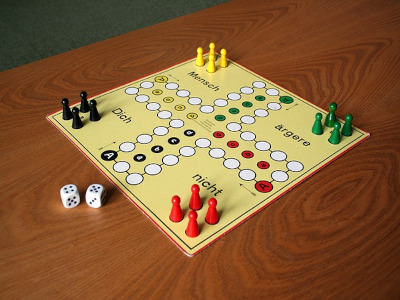We all know and love board games since many generations of people grew up with them and have many happy memories when they think back about their childhood. You can spend many hours playing the same game over and over again. Children are especially able to improve their team-building abilities through board games because they often require a team consisting of at least two players. These games require children to work together, make compromises, and put their own wishes aside in order to achieve the best results for the group. Winning a board game also has the benefit of boosting the child’s self-confidence, but losing is also a valuable experience for them because they learn to deal with the feeling of rejection and to control their emotions.
Another benefit they will experience when playing board games is the promotion of motor skills that will help the children to move their hands and fingers more precisely, for example, when they move a game piece.
Furthermore, when playing longer games, children are “forced” to focus on the game for a longer time. This increases their attention span, which will help them in school or in life in general.

If you like board games, then the German board game “Mensch, ärgere dich nicht!” might be a hit on the next game night with your family or friends.
“Mensch, ärgere dich nicht!” which literally translates to “Man, do not get angry!” originated in Germany, where it brought joy to many people of different ages. Whether you are still a child or already older, the fun it brings to you does not depend on your age. The predecessor version of the game as we know it today goes back to the Indian game of “Pachisi” which was brought by English salesmen. The game “Mensch, ärgere dich nicht!” as we know it today was invented by Josef Friedrich Schmidt in 1914. When the game was released, it didn’t go well with the Germans, so Schmidt donated 3000 copies to German hospitals. Ever since then, the game has been very popular and is played under many different names around the world.
To play the game, you need to have at least 2 players and a maximum of 4 players. Every player receives four game pieces (every player has a different color). The goal of the game is to lead your figures over the path that is shown on the board. Every player receives a die and has to move over the board depending on the number of eyes on the dice. One eye on the dice means one step on the board. Your goal is to be the first player to bring all your figures back to your “house” in order to win. The “house” is the personal area of each player, where the figures are in safety. The player whose four figures enter the “house” first wins the game.
You can sabotage the other players by capturing their game pieces. This can be achieved when you land on their field. The game piece of the regarding player has to go back to its “house,” and the opponent player has to start all over again.
Sources:
https://manhattanpsychologygroup.com/benefits-board-games/#:~:text=There%20are%20many%20benefits%20of,recognition%2C%20and%20encouraging%20flexible%20thinking.
https://www.spielregeln-spielanleitungen.de/spiel/mensch-aergere-dich-nicht/
https://www.spielregeln.de/en/man-dont-get-angry.html
